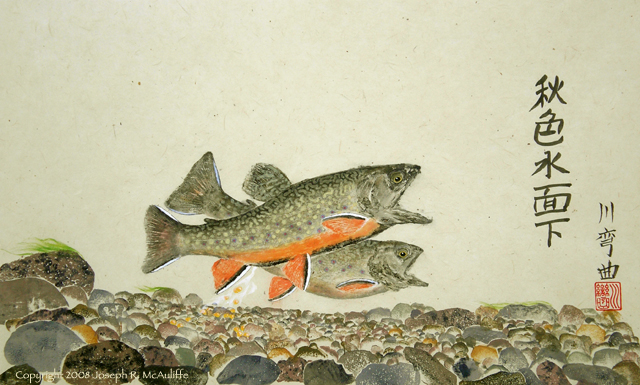
As leaves of maples and aspen turn from green to red and gold in the fall, brook trout likewise don the brilliant colors of their spawning season. The belly and ventral fins of the male turn the most brilliant vermilion found anywhere in nature. The bold hue is starkly offset by crisp white and black leading edges of the fins and an irregular band of black along the belly. In comparison, the female’s coloration is more subdued. Both sexes sport the small crimson spots with halos of violet blue along the sides and are camouflaged with worm-like mottling of olive and yellow over their backs.
In preparation for spawning, a female turns over on her side and beats her tail against the streambed, creating a small depression called a redd. Males compete with one another for females. During spawning season, the male’s jaws lengthen and the lower jaw develops a protruding hook called a kype with sharp teeth. Using the kype as an intimidating weapon, a large dominant male defends his territory and the females in it from the incursions of lesser males.
When the female is ready to deposit her eggs, she and the male lie side by side in the redd. They stiffen and arch their backs and with mouths open widely, vibrate their bodies and release eggs and sperm. After they spawn, the female digs at the upstream side of the redd and covers the eggs with gravel, then completely abandons the redd. Months later, the eggs hatch beneath the gravel where they remain for several weeks as the fry live off their attached yolk sacs. Eventually they leave the gravel and enter the environment of the swift mountain stream.
Size: 18 x 12 inches
Return to Gallery 6.